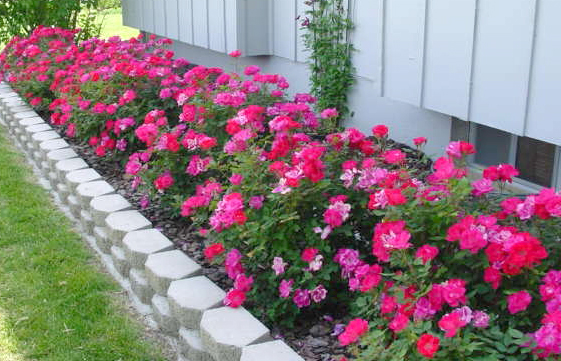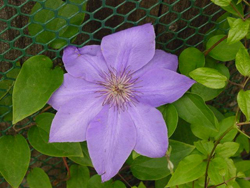Pruning Made Simple
Return to Trees and Shrubs Agent Articles
 Pruning seems to be a difficult concept for many. There is a certain amount of apprehension and fear that comes with pruning. Will I make the wrong choice? Will the plant look bad? As a result many people don’t prune and then the plant becomes overgrown and unsightly in the landscape. Pruning really is not all that difficult, especially if you subscribe to the foolproof, no-thought style of pruning which I refer to as “whack it back”!
Pruning seems to be a difficult concept for many. There is a certain amount of apprehension and fear that comes with pruning. Will I make the wrong choice? Will the plant look bad? As a result many people don’t prune and then the plant becomes overgrown and unsightly in the landscape. Pruning really is not all that difficult, especially if you subscribe to the foolproof, no-thought style of pruning which I refer to as “whack it back”!
You can search all you want but you will probably never see the term “whack it back” in any pruning book. For me it is the simplest way to tell gardeners, unsure of pruning, how to improve a plant without them having to make major decisions about where to make the cuts.
Shrubs that can be whacked back
The “whack it back” method is not for all shrubs, just a select few that respond well to this extreme method. Many of the summer-blooming shrubs are best handled this way. Whacking back means to basically remove all the old stems to, or within six inches of, the ground. The plant reacts by sending vigorous canes from the base to breathe new life into a tired shrub. Many of you use this type of pruning on butterfly bushes that winterkill.
Other shrubs that respond to this method include some of my favorite and easy to grow plants such as blue mist spirea (Caryopteris), summer blooming spirea, bush honeysuckle (Diervilla), and even some of the easy care shrub roses such as the Knock Out group.
It is amazing how quickly the plants grow, sending up shoots that develop into fresh growth loaded with blooms. The plant looks cleaner, as the dead twiggy growth is gone.
Pruning clematis
 I also sometimes recommend the “whack it back” method for clematis. If you follow clematis pruning by the book, you are quickly overwhelmed by the three categories. First you have to remember the variety you planted, and then you must determine what group it belongs to. Unless you keep detailed records, remembering the variety is often difficult, so we are lost right from the start.
I also sometimes recommend the “whack it back” method for clematis. If you follow clematis pruning by the book, you are quickly overwhelmed by the three categories. First you have to remember the variety you planted, and then you must determine what group it belongs to. Unless you keep detailed records, remembering the variety is often difficult, so we are lost right from the start.
Cutting the clematis to the ground each spring encourages new shoots from the base which result in a vine covered with blossoms. The main drawback to this method is the plant may start flowering a few weeks later and may not get quite as big. For most, including myself, I will make this sacrifice as I can quickly go through the garden in the spring rejuvenating one of my favorite vines without any fuss.
The “whack it back” method is not a concept that all gardeners can warmly embrace, but it does make the pruning chores a lot simpler with pleasing results. Give this method a try and see for yourself. Don’t be shy. Just get in there and “whack it back”. You may find you never go back to your old style of pruning again, as this gives you the right to toss your fears aside and prune like a pro.

Have questions? The Garden Hotline is staffed by trained EMG volunteers and Extension staff who will assist you with questions.
Phone: (913) 715-7050
Email: garden.help@jocogov.org